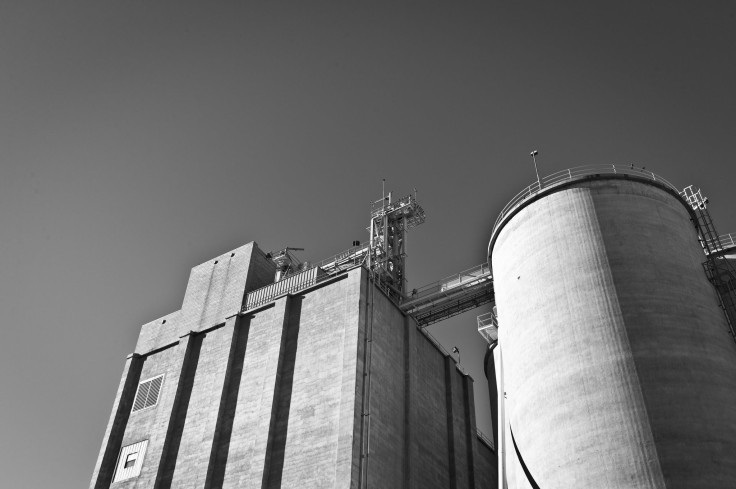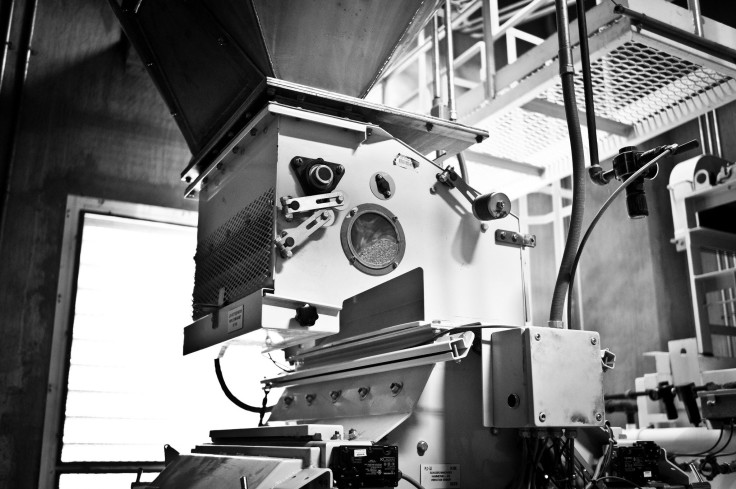The Fight Against Food Poisoning: Can Mars Inc. And IBM Help Food Manufacturers Stop Harmful Bacteria Outbreaks?

Nearly 200 people fell ill this month after sampling the creations at Marisco’s #3 Mexican Sea Food restaurant in downtown San Jose, California. Local health officials say shigella, a kind of bacteria that causes fever and diarrhea, was to blame. Harmful bacteria made it all the way through the supply chain and wound up on diners' plates. It's exactly the type of situation two unlikely collaborators, Mars Inc. and IBM, are attempting to stop with a combination of microbiology and big data analytics.
The U.S. Centers for Disease Control and Prevention estimated 1 in 6 Americans become ill each year from 250 known foodborne illnesses. The food industry regularly tests products for common bacteria such as E.coli or salmonella, but Dave Crean, vice president of corporate R&D at Mars Inc., says there have been few improvements to this process in the past two decades. Current tests check for only one type of bacteria at a time and still require a scientist to know what they are searching for.
“What keeps me awake at night is [that] we don’t know what we don’t know,” Crean says.
These deficiencies are at the heart of a new project by the global food giant and IBM to develop better detection of food safety issues by studying the microbiome -- the total collection of microorganisms present -- in the supply chain. Mars says it will help catch outbreaks earlier and prevent sickness. IBM says it will persuade multinational food companies to hire its data analytics team to run tests on their ingredients and packaged foods. The duo are inviting other food companies to join and expect to announce new collaborators soon.
“We think that you would start to see things changing in the microbiome before you even register that you have a problem with listeria or salmonella,” Jeff Welser, vice president of IBM research, says. Small disruptions to any system can leave fingerprints on its microbial community. The microbiome within the human gut can even reflect the vitality of its host.
Or the project could be a total flop. It’s not yet clear to IBM or scientists whether any variation in the microbiome of two grain shipments, for example, is actually meaningful or simply noise. If there’s too much day-to-day change between products or too little disruption when harmful bacteria take hold, the Mars-IBM experiment may hit a dead end.
“I have a feeling what they’ll find is the same thing they've found in humans -- there's a lot of what's normal,” says Dr. Vincent Young, a physician at the University of Michigan who studies the role of bacteria in the gastrointestinal tract. “You sequence a cornfield in Iowa and a feedlot in Nebraska and a rice paddy in Vietnam and they're all going to be completely different and yet they're all ‘healthy.’ "

Crean and Welser say the effort is worth a shot. For restaurants and food manufacturers, there is no surer way to lose customers’ trust than to cause a foodborne illness. Last summer, a listeria outbreak at the processing plants of Blue Bell Creameries killed three people. The ice cream company recalled all items and shut down production for months. Marisco's in San Jose has closed indefinitely.
Though invisible, it's abundantly clear to scientists that the microbiome shapes the world in subtle ways. Soil-dwelling microorganisms remove pollutants from the air, and oceanic ones pump oxygen back into it. As scientists work to refine their understanding of these interactions, the Mars-IBM collaboration is just one of many ideas about how it may prove useful to humans. On Wednesday, leading researchers called on the U.S. government to launch a major initiative to study the presence and interactions of microorganisms in humans and ecosystems.
IBM sees a business opportunity in the masses of data gleaned from genetically analyzing food. The company has worked hard to drum up new business for its analytics division and data storage capabilities as it shifts away from manufacturing and selling computer hardware.
But Harsh Bais, a plant biologist at the University of Delaware, doubts the resulting information will be of much use on a practical level. “I know IBM handles data and they can probably justify their servers now,” he says. “This is just one more data set.”
Ambitious sequencing efforts in human genetics have proved that troves of data do not always result in treatments due to other confounding factors. “As it is right now, just because you can generate massive amounts of DNA analysis doesn't mean you're going to create something actionable,” Young says.
Welser acknowledges that problem, but he remains hopeful that his team will be able to discern the meaningful from the not-so-meaningful bits of data. “This is a classic big data problem,” he says.

To test their idea, the companies have launched a pilot at a pet food factory in Reno, Nevada, that manufactures products for a variety of Mars brands, including Pedigree and Whiskas. Workers are collecting samples from incoming shipments and processed pet food and taking swabs of factory equipment. Researchers at University of California, Davis then crush up all the material and sequence every bit of DNA it contains, a process known as metagenomics, to describe the full array of genes present in that product or ingredient.
With enough samples, the companies will start to understand what the microbiome of a grain shipment from a specific supplier typically looks like. If future analyses detect sudden changes in shipments from that same supplier, the companies say it might tip them off to a potential outbreak. They don’t expect microbiome analysis to replace traditional testing, but they do expect it to turn up far more clues about food safety than could ever be uncovered using today’s methods. Crean says he hopes to debut new tests based on this approach by 2018 or 2019.
The companies have not published any data on the pilot test, so it’s too early to know if their theory could actually help to improve the safety of the food supply. Welser says preliminary results have hinted that their tools can at least detect changes when bacteria are present. “We're seeing that yes, the microbiome reacts and it does do what we think it should do,” he says. “It reacts and we can see the reaction.”
However, Young points out that even when genetic analysis can tell researchers which genes or bacteria are present in a sample, it doesn’t actually tell them whether the organisms or genes are harmful or harmless. The same genes and bacteria can prove dangerous or inert, depending on the environment and presence of other genetic cues.
“Knowing all these bugs are there doesn't tell you what they’re doing,” he says.
Bais emphasizes that bacteria shouldn’t be in these factories in the first place. He would prefer that manufacturers focus their resources on stopping it from infiltrating the food supply rather than tweaking their diagnostic tools. In his own research, Bais works with farmers to apply benign bacteria to the roots of lettuce and leafy greens that cause the plant’s stomata, or pores, to close and prevent harmful bacteria from entering.
“ You need to develop earlier checkpoints than this one,” he says. “This is pretty late in the game.”
© Copyright IBTimes 2024. All rights reserved.





















